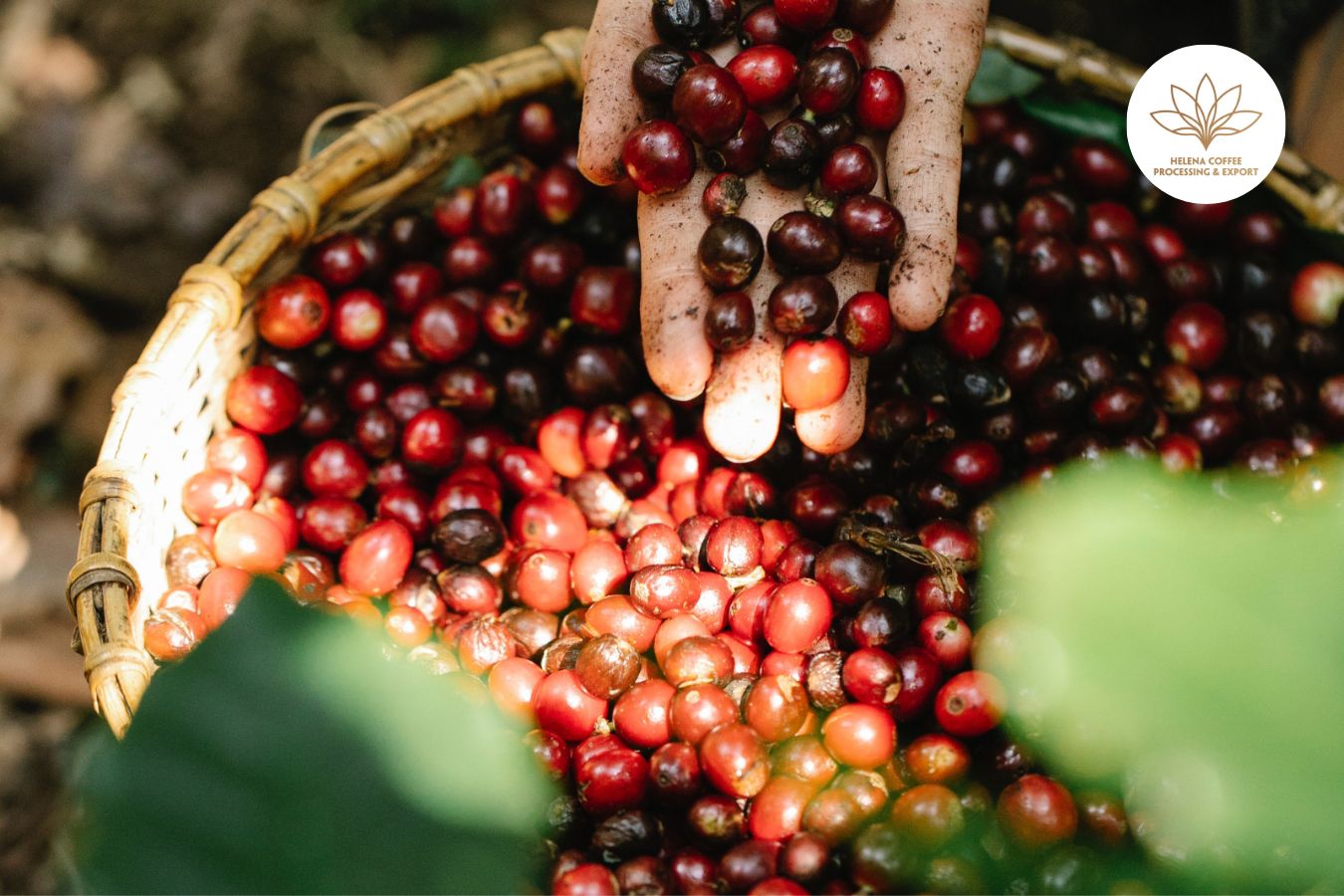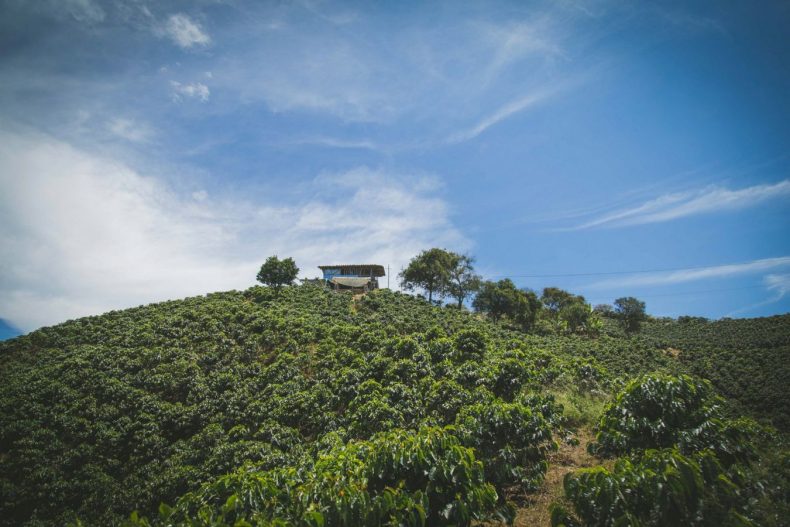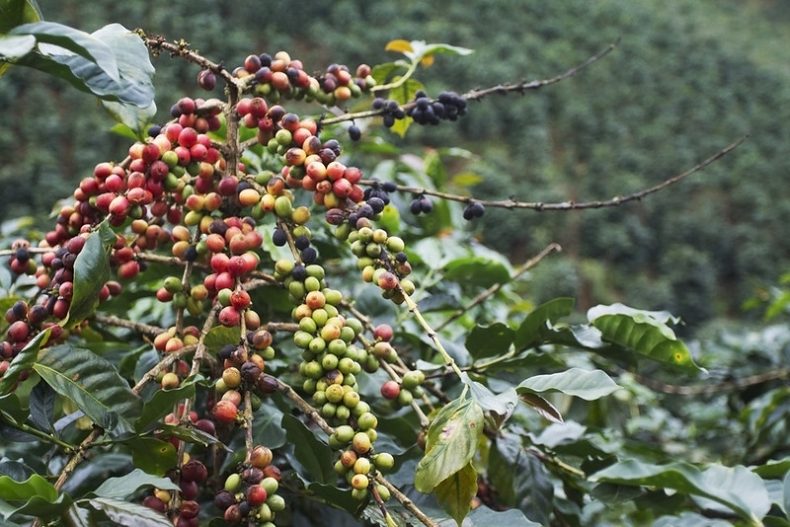
What Is Catimor Coffee? History, Features Of Catimor, Taste: Suppose you are looking for a coffee with a subtle aroma. In particular, Catimor coffee will be a perfect choice that you cannot refuse.
We believe that Catimor will be the place to hide exciting things that you will find interesting when learning about this coffee. Catimor coffee belonging to the Arabica genus is one of the most productive and easy to grow coffee varieties today.
If you are a lover of subtle coffee flavours, then Catimor is an undeniable choice. So do you know anything about this coffee variety? If interested, let’s find out more in the article below.
What is Catimor Variety? The biological characteristics of Catimor Arabica Cultivar
Catimor coffee (sometimes called tea coffee) is a cross of Timor and Caturra coffee. Arabica coffee is its scientific name (Timor was bred from Arabica and Robusta coffee). To distinguish it from other coffee varieties, Catimor is also known as T8667 (called in Central America). They also have a sensual and delectable aroma.
Catimor is a fantastic coffee variety. In 1959, a Portuguese laboratory created a lovely coffee flavor. Users will find a solid bitter taste mixed with a delightful and sour taste when enjoying this type of coffee. This is what makes this coffee special.

Many coffee connoisseurs have enjoyed this drink. They all share the same feeling about the deliciousness and permeability of each drop of coffee. Not only stopping the sweetness at that time, but the taste of Catimor still lingers, making people remember it forever.
Regarding biological characteristics, the Catimor coffee tree is a tree with a canopy that covers the trunk, thus limiting the damage of stem borers (the behaviour of this species is that it does not like to lay eggs in low light places).
Catimor coffee grows in the form of a bush with small leaves, not very tall, and looks low from the outside like a tea tree. Catimor seeds are round, small, and contain very little caffeine (only about 1–2%).
Catimor beans are a bit like Arabica Bourbon coffee beans, so it is difficult to recognize. But for those who have used coffee for a long time, it will be easy to recognize which is genuine Catimor.
This Catimor coffee variety, when hybridized, has good resistance to pests and diseases, thereby becoming one of the coffee varieties with the highest economic value in Vietnam.
Catimor trees with 1 hectare of coffee will yield 4-5 tons (if cultivated well). Due to its high yield, rust resistance, and delicious taste, the price of Catimor coffee is also about 1.5 times higher than that of coffee beans.
Currently, in the world in general and in Vietnam in particular, there are also Catimor coffee varieties as follows:
- Catimor T-8667 Coffee: This is a coffee variety with a rather short stem but very large fruit and seeds.
- Catimor T-5269 Coffee: This is a healthy plant that adapts well to growing heights from 600-900m above sea level with a rainfall of more than 3000mm per year.
- Catimor T-5175 Coffee: This is a very high yielding coffee variety, but cannot adapt to too low or too high growing conditions.
The history and origin of coffee farming Catimor
According to history, in the years 1958 – 1959 of the 19th century, Central South America often faced epidemic diseases on coffee trees, in which Bourbon, Typica, and Moka coffee are affected varieties benefit the most.
To find a way to save, scientists have tried to research to create a new coffee variety that can withstand the disease. By 1959, the Portuguese Coffee Institute (CIFC) had received a lot of Timor Hybrid seeds from the island of Timor (Timor Hybrid is a natural hybrid between C. Arabica and C. Robusta, present in Vietnam island of Timor in 1920).
The best news is that the genetics from Robusta gives Timor excellent resistance to rust. From the two seed lots received by CIFC, they started research to create new coffee varieties that are disease resistant, compact, easy to grow and can give a high yield in the same cultivated area.
And at IAC – Brazil, hybrids called “Cat Catoror” were born after some initial testing, right during the appearance of rust in the Americas. Then the next time came the varieties. Catimor Cafe has undergone selected in many places in many parts of Latin America and has begun to disperse to many countries worldwide.
The Malawi Research Unit used five breeds of Catimor. Six lines of Catimor were selected and brought into cultivation in Papua New Guinea.
Areas for growing and developing Catimor coffee varieties
The shape, size, as well as the flavour of Catimor coffee, are often dominated at the height of the soil. For Arabica in general and Catimor in particular, the suitable altitude for planting is in the range of 550-1920m, along with a cool and temperate climate. As for Catimor coffee, according to many research results, if grown at an altitude of 700-1000m, it will usually grow optimally.
Currently, due to its high yield and good resistance to pests and diseases, Catimor coffee is widely grown in Vietnam. And the places that are considered the promised land for this coffee variety are the lands that meet the above favourable conditions.
Therefore, in terms of climate and soil conditions, the provinces of Dak Nong, Lam Dong, Dak Lak, Quang Tri, Nghe An and Son La are the most strongly developed Catimor coffee in Vietnam. These are also the lands that currently have the largest Catimor growing area in our country.
Catimor coffee beans and plants
The Catimor tree is a woody plant. This is a shrub with small leaves, low in appearance like a tea tree, and one of Vietnam’s most economically valuable coffee varieties. Catimor coffee beans have small hemispherical shapes. The amount of caffeine is low, only about 1-2%. This coffee variety, when bred, has good resistance to pests and diseases, ensuring a lovely taste.

Although Catimor beans are a bit like Arabica Bourbon coffee beans, it isn’t easy to recognize these two types of coffee for ordinary people. However, for coffee connoisseurs who have used coffee for a long time, it will be easy to identify. They need to look at the coffee beans to recognize which is the genuine Catimor.
Catimor flavour
Genuine Catimor seeds, when mixed, will have a light brown colour; when enjoyed, they have a very diverse bitter taste. You can feel it from mildly painful to intensely bitter. In particular, coffee has a lovely and slightly sour taste.
According to many people, Catimor has more economic value than Robusta from a financial point of view. The reason is that the harvest season falls in the rainy month, so the output is not high.
The best time to use is after 72 hours after roasting. If the roast is not guaranteed, it will not only have no aroma but also have a strong taste and burn that is not easy to drink. Therefore, to prepare a good cup of coffee, it is impossible not to pay attention to the roasting stage. This is the critical point, creating the mark of a good coffee.

How to enjoy Catimor coffee
Each person will have different ways of enjoying coffee, depending on their personality and preferences. However, according to experts, with Catimor, you can choose two ways to want to be able to feel this unique flavour fully.
Completely roasted
Catimor is a hybrid with ¼ characteristics of pure Robusta coffee, so it still retains the richness of coffee. Therefore, enjoying Catimor is suitable for mixing filters to form iced black coffee or iced milk.
To get an excellent standard cup of coffee, you should choose pure coffee and calculate the perfect ratio for coffee extraction: 10g of coffee powder to 175ml of water.
According to experts enjoying coffee, to preserve the freshest coffee flavour, it is essential to keep the mouth of the coffee bag sealed and store it in a cabinet at room temperature. It would help if you did not store it in the refrigerator. The appropriate time is to brew within one week after opening the bag.
Mix for a different taste
If you want to add a little more flavour, you can mix Catimor with Robusta in a ratio of 3:1 or 4:1 to make the taste more intense.
Precautions while using Catimor
Catimor contains a higher caffeine content than pure Arabica coffee. Therefore, people with a history of cardiovascular disease or suffering from insomnia are often recommended to limit the use of this coffee.
How to grow and care for Catimor coffee
Although for high yield, to ensure that coffee can grow well, it is necessary to plant and care for Catimor coffee properly. According to agricultural experts when growing Catimor, you should pay attention to the following:
- Coffee growing season: The best time to grow Catimor coffee falls in the Fall (August-September DL) or Spring (February-March-DL) crop. At this time, in the Central Highlands provinces, the weather and seasonal characteristics are favourable for the development of young coffee trees.
- Soil: Coffee land must be ploughed and cleared of weeds before planting.
- Planting density and spacing: It is recommended to plant at a density of 6666 trees/ha (in areas where the soil does not have high fertility), that is, each row of coffee will be 1.5 m apart; The trees are spaced 1m apart. As for the terrain or good soil, it is recommended to plant at a density of 5000 trees/ha, that is, 2m apart from each other; the tree is 1.5m from the tree. And it should be planted at a density of 3333 trees/ha (in medium soil areas), with rows 2m apart; a tree 1 m from the tree.
- Intercropping short-term crops: In order to take advantage of bare land to increase income as well as fight weeds, prevent erosion and improve soil, when Catimor coffee is small, it is possible to intercrop short-term crops such as beans, peanuts, etc. The intercropping of short-term plants also has the meaning of increasing the plant diversity of the coffee crop population, whereby a good intercropping garden can provide the coffee lot with a large amount of pure protein (hundreds of kg/ha) and many other nutrients and minerals. As a result, the natural enemy system is established faster and becomes more abundant, which will protect coffee trees from being invaded by pests.
- Shade for coffee trees: Catimor coffee trees need shade. Shade trees such as acacia fern should be planted at a moderate density and spread evenly in the coffee garden, not only helping to shield the frost in winter for coffee but also helping to create scattered light. However, to avoid rust, the trees need to ensure ventilation.
- Dredging soil to prevent erosion: Immediately after planting coffee and tea trees, people should dredge into trenches along or along rows of trees to limit erosion in the rainy season. Besides, you must regularly dig around the tree to kill weeds and create porosity for the soil, helping coffee grow better.
- Chemical fertilizers: Balanced chemical fertilizers combined with organic fertilizers are properly and adequately applied to help coffee grow, develop and increase resistance to pests and diseases.
- Clean grass: One of the most important things before fertilizing is to clean the grass. Catimor coffee garden will be susceptible to dry branches and dry fruits if not cared for and weeded well. In addition, if the planting site has frost, it is necessary to spray water on the foliage of coffee trees before that. Then take good care of the coffee to recover quickly.
- Watering regularly: Watering works to maintain the growth of Catimor coffee trees and is also a condition for flowering plants. At the beginning of the dry season in the Central Highlands, Catimor coffee trees need to be watered 3-4 times, 20-25 days apart, depending on the age of the tree, watering the appropriate amount: The first year and two years of care next need to irrigate 200-300m3/ha/1 time watering. The next business years need to irrigate 400 – 500m3/ha/1 time. The first watering for the coffee business is when the flower buds have fully developed (end of January) and the amount of water needed is 600 m3/ha/first batch. However, in the northern provinces, Catimor coffee is grown thanks to the suitable climate, weather and soil, so there is almost no need for irrigation, only watering when the drought is prolonged.
- Breaking buds, pruning branches: When Catimor coffee buds grow from the main stem and leaf axils, they need to be broken off, on average, 5-6 times/year. And after harvesting coffee, start pruning branches, that is, use scissors to cut toothpicks, small branches adjacent to the trunk, dry branches, and diseased branches. Timely pruning makes the tree recover faster, the flower cluster is larger and limits pests for the next crop.
Above is the basic information about Catimor coffee to readers. Hopefully, enjoying a glass of Catimor every day will help you stay awake and start your day in a better way. Wish you are always happy every day with Catimor flavour!

